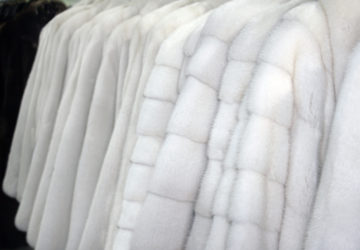- The Environmental Working Group (EWG) does not represent mainstream scientific views on the health risks from chemicals. According to a survey conducted for the George Mason University Statistical Assessment Service by pollster Harris International, 79 percent of members of the Society of Toxicology — experts on health risks from chemicals — who expressed an opinion thought EWG overstated chemical risks. Small wonder then that some call the EWG the Environmental “Worrying” Group.
- EWG helped promote the dangerous and false idea that vaccines cause autism. In 2004, EWG published a report (“Overloaded? New Science, new insights about mercury and autism in children”) that raised “serious concerns about the studies that have allegedly proven the safety of mercury in vaccines.” The entire scare — cooked up in large part by a disgraced British physician whose license to practice was stripped for misconduct that bordered on fraud — was found baseless by the Institute of Medicine and the Centers for Disease Control. The wide-scale scaremongering by EWG and other groups has led to declines in vaccination rates that have led to the reemergence of previously all-but-eradicated diseases like measles.
- EWG scaremongers against foods produced with biotechnology (GMOs). EWG leads a campaign to place what a Politico reporter called “warning labels” on foods produced using biotechnology. Experts including the World Health Organization, the American Association for the Advancement of Science, the European Food Safety Authority, the Food and Drug Administration (FDA), and the American Medical Association find biotech foods just as safe as their non-biotech equivalents. As the editorial board of Scientific American recently noted, “Compared with conventional breeding techniques—which swap giant chunks of DNA between one plant and another—genetic engineering is far more precise and, in most cases, is less likely to produce an unexpected result.”
- EWG exaggerates risks from commonly used cosmetics products. The EWG ran and later spun off the Campaign for Safe Cosmetics (CSC), which alleged that “industry [can] put virtually any chemical into cosmetics with … no monitoring of health effects.” This claim is inaccurate: The FDA has the power to inflict stiff penalties on cosmetics producers who market unsafe products. CSC’s most prominent claim, a scaremongering attack on lead levels in lipstick versus permitted levels in drinking water, was adjudged by the FDA to be based on a comparison that is “not scientifically valid.” (Hopefully nobody’s eating lipstick.) In the STATS/Harris International survey, 66 percent of Society of Toxicology members disagreed that cosmetics were “a significant health risk.”
- EWG has been criticized for attacking consumption of fresh produce by scaremongering about trace amounts of pesticides. Each year, EWG releases a list it calls the “dirty dozen” of the produce items with the highest pesticide residues. It encourages people to choose the more expensive organic versions of those products, but a University of California, Davis analysis of the list found that unnecessary. The UC-Davis report noted, “Consumer exposures to the ten most frequently detected pesticides on EWG’s ‘Dirty Dozen’ commodity list are at negligible levels” and that “consumption of organic produce should not be equated with consumption of pesticide-free produce.” Ultimately, EWG appears to deny the central tenet of toxicology that “the dose makes the poison.”
5 Things You Didn’t Know About the Environmental Working Group





